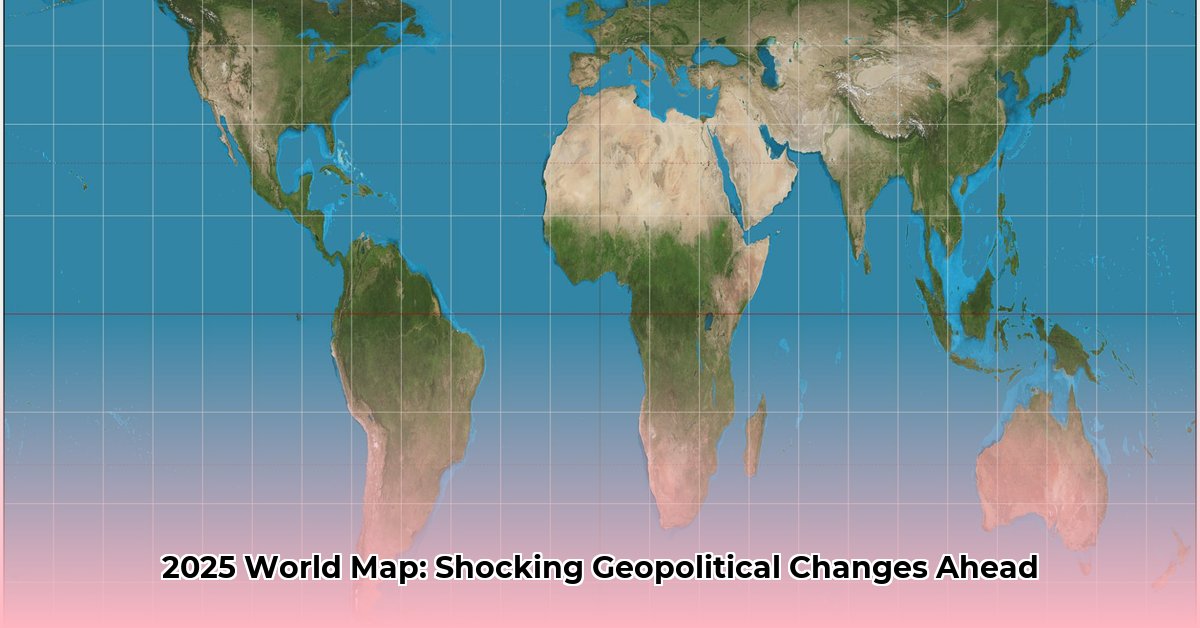The world of 2025 is fast approaching. While crystal balls remain elusive, analyzing current trends and potential disruptions allows us to anticipate the evolving geopolitical landscape. This article examines the forces shaping the world map of tomorrow, from subtle shifts in power dynamics to the potential for unexpected disruptions, while exploring the implications for various stakeholders. For a visual aid, check out this U.S. map.
The 2025 Baseline: A World of Subtle Transformations
Current projections suggest that the 2025 world map will largely resemble the present day. Existing borders and major geopolitical actors are expected to remain, with changes occurring more as subtle shifts rather than dramatic redrawings. Think of it as a slow-moving river: the banks remain largely the same, yet the currents and water levels constantly fluctuate. We can anticipate minor border adjustments, evolving spheres of influence, and the resolution of localized disputes. However, these subtle shifts can mask deeper transformations. Underlying power dynamics, economic alliances, and resource competition are continuously reshaping the geopolitical landscape beneath the surface.
Beyond the Headlines: Unforeseen Disruptions and Their Potential Impact
While the baseline scenario points toward relative stability, the potential for unforeseen disruptions remains. Low-probability, high-impact events, such as major natural disasters, pandemics, or significant technological breakthroughs, could dramatically reshape the global landscape. Consider the potential impact of a major earthquake along a densely populated coastline, or the rapid emergence of a disruptive technology that fundamentally alters economic or military power. While predicting the precise nature of these events is impossible, anticipating their potential consequences is crucial for building resilience and adaptability. Contingency planning and robust risk management strategies are essential for navigating a world susceptible to unexpected shocks.
Land Acquisition Trends: Securing Stability in an Uncertain World
A notable trend in the current geopolitical landscape is the increasing acquisition of land, particularly by high-net-worth individuals and corporations. While some might associate this with “doomsday prepping,” the motivations are likely more nuanced. Factors such as climate change, resource scarcity, and political instability are driving investors to seek stable and resilient locations for their assets. The desire for self-sufficiency, access to vital resources, and insulation from potential disruptions is likely fueling this trend. Examining these land acquisition patterns offers valuable insights into the evolving perceptions of risk and the pursuit of long-term security.
Navigating the 2025 Landscape: A Stakeholder Perspective
The evolving geopolitical landscape presents unique challenges and opportunities for various stakeholders. Understanding these dynamics is crucial for informed decision-making and effective strategy development.
Governments: Balancing national interests with international cooperation will be paramount. Strengthening alliances, investing in disaster preparedness, and addressing climate change are key priorities. Adapting to shifting global power dynamics and managing the potential for regional instability will require strategic foresight and diplomatic agility.
Private Sector: Businesses must prioritize adaptability and resilience. Diversifying supply chains, investing in climate-resilient infrastructure, and anticipating shifts in consumer demand are crucial for navigating an uncertain future. Understanding and addressing the geopolitical risks specific to their industry and geographic footprint will be essential for long-term success.
Individuals: Building personal resilience is becoming increasingly important. Developing emergency preparedness plans, staying informed about global events, and adapting to changing environmental conditions are crucial for navigating potential disruptions. Supporting sustainable practices and engaging in informed civic participation can contribute to a more stable and secure future.
Assessing and Mitigating Geopolitical Risks: A Framework for Action
Geopolitical risks are complex and interconnected. A structured approach to risk assessment and mitigation is essential for navigating the challenges of 2025 and beyond. The following framework provides a starting point:
Identification: Identify potential geopolitical risks across various categories, including political instability, climate change, economic shocks, and technological disruptions.
Assessment: Evaluate the likelihood and potential impact of each identified risk. Consider both short-term and long-term consequences.
Mitigation: Develop and implement strategies to mitigate the identified risks. This may involve diversifying investments, strengthening infrastructure, developing contingency plans, or fostering international cooperation.
Monitoring: Continuously monitor the evolving geopolitical landscape and adjust strategies as needed. Adaptability and responsiveness are crucial for navigating a dynamic and unpredictable world.
Charting a Course into the Future: Preparedness and Adaptability
The world of 2025 will be shaped by a complex interplay of forces. While predicting the future with certainty is impossible, understanding current trends and anticipating potential disruptions allows us to prepare for the challenges and opportunities ahead. By embracing adaptability, prioritizing resilience, and fostering collaboration, we can navigate the evolving geopolitical landscape and build a more secure and prosperous future.
- Unlock Filipino Culture: A Deep Dive into Traditions and Practices - April 23, 2025
- Unlock Spanish Culture: Insights & Opportunities Now - April 23, 2025
- White Spirit Uses & Substitutes: A Deep Dive for Pros & DIYers - April 23, 2025
















